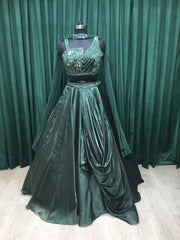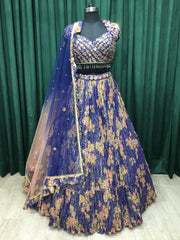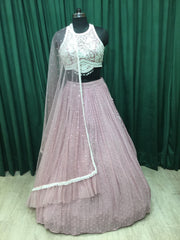Is the Gown a Dress? Why is it Called a Gown?

Outline:
- Introduction
- Defining a gown
- Difference between a gown and a dress
- Historical origins
- Early gowns
- Evolution of fashion terminology
- Characteristics of a gown
- Length
- Style
- Fabric
- Usage and occasions
- Formal events
- Academic ceremonies
- Medical profession
- Regional variations
- Cultural significance
- Traditional attire
- Symbolism and prestige
- Gowns as symbols of authority
- Prestige associated with wearing gowns
- Popularity and trends
- Fashion industry impact
- Celebrity culture
- Linguistic explanation
- Etymology of "gown"
- Language evolution and usage
- Contemporary interpretation
- Blurring lines between gowns and dresses
- Fashion designers' perspectives
- Social perceptions
- Gender associations
- Class and status connotations
- Practical considerations
- Comfort and functionality
- Personal style preferences
- Debates and controversies
- Fashion terminology debates
- Cultural appropriation concerns
- Impact of globalization
- Cross-cultural influences
- Standardization vs. diversity
- Conclusion
- Recap of key points
- Final thoughts on the gown vs. dress debate
Is the Gown a Dress? Why is it Called a Gown?
Introduction
When discussing fashion, particularly women's attire, the terms "gown" and "dress" are often used interchangeably. However, there are subtle distinctions between the two that are worth exploring. In this article, we delve into the intriguing world of gowns, examining their historical origins, defining characteristics, cultural significance, and the reasons behind their distinct nomenclature.
Historical Origins

The concept of the gown traces back centuries, with its roots entrenched in early civilizations. Historically, gowns were long, flowing garments worn by both men and women, typically indicating social status and wealth. Over time, as fashion evolved, the terminology surrounding clothing also changed, leading to the differentiation between gowns and other types of garments.
Characteristics of a Gown

Gowns are characterized by their length, often extending to the floor or ankles, and their elegant and sophisticated appearance. They are typically made from luxurious fabrics and feature intricate designs and embellishments, setting them apart from casual dresses or everyday wear.
Usage and Occasions

Gowns are commonly associated with formal occasions such as weddings, galas, and red-carpet events. They are also worn during academic ceremonies, where graduation gowns symbolize academic achievement and attainment of degrees. Additionally, gowns are a staple in the medical profession, worn by doctors and surgeons as a symbol of authority and professionalism.
Regional Variations

The style and design of gowns vary significantly across cultures and regions, reflecting diverse traditions and customs. In some cultures, gowns hold deep cultural and religious significance and are worn during ceremonial rituals and festivities.
Symbolism and Prestige

Gowns often carry symbolic meanings and are associated with prestige and authority. In various professions, such as law and academia, specific types of gowns are worn to denote rank, status, or specialization, reinforcing their symbolic significance.
Popularity and Trends

In the world of fashion, gowns remain a timeless and iconic garment, transcending trends and seasons. Fashion designers continuously reinvent the concept of gowns, incorporating modern elements and innovative techniques to keep them relevant in a rapidly changing industry.
Linguistic Explanation

The term "gown" has its origins in Old English and Old French, referring to a loose-fitting garment worn over other clothing. Over time, the term evolved to encompass a broader range of styles and silhouettes, reflecting shifts in fashion and language usage.
Contemporary Interpretation

In contemporary fashion, the line between gowns and dresses has become increasingly blurred, with designers experimenting with hybrid styles and unconventional designs. Modern gowns often feature elements traditionally associated with dresses, blurring the distinction between the two.
Social Perceptions

The perception of gowns is influenced by societal norms, gender expectations, and cultural ideals of beauty and elegance. While gowns are often associated with femininity and grace, they can also convey power, authority, and sophistication, depending on the context and wearer.
Practical Considerations

Despite their aesthetic appeal, gowns also raise practical considerations such as comfort, mobility, and suitability for specific occasions. Factors such as fabric choice, silhouette, and embellishments play a crucial role in determining the practicality and functionality of a gown.
Debates and Controversies

The distinction between gowns and dresses has sparked debates within the fashion industry and among linguists and cultural critics. Some argue for a more nuanced understanding of fashion terminology, while others emphasize the importance of preserving traditional definitions and meanings.
Impact of Globalization

Globalization has facilitated the exchange of ideas, styles, and trends across cultures, influencing the perception and interpretation of gowns worldwide. While globalization has led to greater diversity and innovation in fashion, it has also raised questions about cultural authenticity and appropriation.
Conclusion
In conclusion, while the gown and the dress share similarities, they each possess unique characteristics and cultural connotations. The term "gown" evokes images of elegance, sophistication, and ceremonial significance, distinguishing it from other types of garments. Whether worn on the red carpet, in the operating room, or at a graduation ceremony, the gown continues to captivate and inspire, transcending its humble origins to become a symbol of style, prestige, and tradition.
FAQs
-
Are gowns only worn by women?
- While gowns are traditionally associated with women's fashion, men also wear gowns in various cultural and professional contexts.
-
What's the difference between a gown and a robe?
- While both gowns and robes are loose-fitting garments, gowns are typically more formal and often feature embellishments or special design elements.
-
Can a dress be considered a gown if it's long and formal?
- While some formal dresses may resemble gowns, the distinction often lies in the level of sophistication, fabric choice, and cultural context.
-
Why do doctors wear gowns?
- Doctors wear gowns in medical settings as a protective garment to prevent contamination and maintain a sterile environment during surgical procedures.
-
Are wedding dresses considered gowns?
- Yes, wedding dresses are a type of gown, typically characterized by their elaborate design, luxurious fabric, and ceremonial significance.


















































